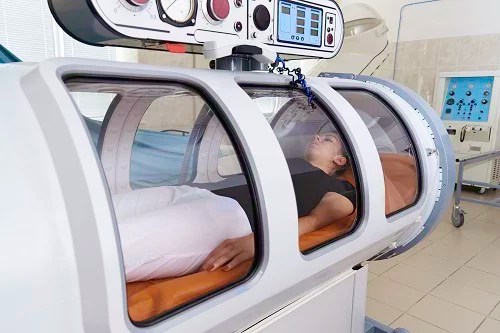Scuba diving is not danger free and providing that you have received your dive training at a fully registered dive school you should be aware of any pitfalls and dangers that can arise during a dive. Part of the planning process for your dives should include an emergency plan in case a diver gets into difficulties, and all divers should be aware of the dangers of decompression sickness and know how to know the signs and spot its symptoms and be able to provide emergency first aid in such an instance.

Decompression Sickness – What is it?
Also referred to as ‘The Bends’, decompression sickness is caused by the dangerous accumulation of nitrogen bubbles in the diver’s bloodstream and muscle tissues of the body. These form when a diver moves from deep water up towards the surface (from high pressure to low pressure) too quickly, without allowing the oxygen/nitrogen balance in the body to return to normal levels, as happens during a controlled ascent. It is also thought that diving in particularly cold waters or performing strenuous exercise during a dive could also lead to decompression sickness.
The majority of symptoms occur within a very short time of surfacing and if left untreated can result in not just unconsciousness but death. Treatment involves administering 100% oxygen in situ, and during transportation to hospital or a decompression chamber. Decompression sickness is rare, there are around 1000 cases experienced worldwide each year, however it can be incredibly serious if not treated correctly.
Symptoms of Decompression Sickness
The symptoms of decompression sickness vary, due to the various part of the body in which the nitrogen bubbles can collect. Symptoms can range from vertigo like symptoms to headaches, intense fatigue or excessive tiredness. A rash may develop and the diver may complain of joint pain or a tingling sensation in their legs or arms and this may be followed by weakness in the limbs and even paralysis. In some cases the patient may also have difficulty breathing, suffer the effects of shock or lapse into unconsciousness.
The majority of symptoms develop within the first sixty minutes after the dive, with all symptoms developing fully within six hours. Therefore if a diver complains of symptoms a full 24 hours after a dive has taken place they will not be caused by decompression sickness.
How to Avoid Getting Decompression Sickness
- Dive to the depths laid out in the diving tables.
- Make your ascent no greater than 10 meters per minute.
- Avoid dives where you will require a decompression stop off in the water.
- Include a full 3 minute safety stop at 5 meters below the surface.
- Never do more than three dives in any given day.
- If you are planning more than one dive, do the deepest first.
- If you are diving over several days dive for two days then leave a full day before your next dive.
- Don’t do any strenuous activity before diving or straight afterwards.
- Make sure you have drunk plenty of liquids.
- Ensure you are in good health and have regular checkups.
- Make sure to leave at least 24 hours between diving and flying.
Treating Decompression Sickness
There is no pharmaceutical treatment available to treat decompression sickness and you should definitely not try to treat it by descending and reascending. According to functional-medicine.associates, every dive boat should have at least one trained first aider on board who will be responsible for the initial treatment which includes:
- Patients need to be given 100% oxygen (via mask)
- Patients need to be hydrated with plenty of fluids
- Patients need to be kept warm and still
The closest decompression chamber should be notified immediately.
Decompression Chambers
Depending on the severity of the decompression sickness, divers may need to receive treatment in a specialized decompression chamber. This is basically a sealed chamber that can be pressurized by sealing it up and pumping extra air in. When treating decompression sickness the pressure in the chamber is increased from normal air pressure to the pressure found at a depth of 18 meters underwater. The diver in the chamber continues to breathe pure oxygen through a mask, and the pressure of the chamber forces the nitrogen in the body to be expelled at a greater rate. The pressure within the chamber is gradually reduced to simulate a gradual return to the surface, and normal air pressure. This decompression process lasts on average between 5 and 6 hours.
You will learn the basics of decompression sickness in the PADI Open Water Course however if you want to learn how to treat it further, the PADI Rescue Diver course (or its equivalent) may be ideal for you.











